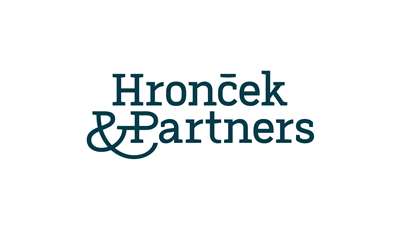The law also takes into account one important fact that may give rise to an obligation for any entity to comply with the public procurement rules. This is the subsidised entity. In the following lines, we will look at the obligation of private companies to comply with public procurement rules.

Public procurement is a significant and important tool through which the state and individual public authorities can carry out their primary tasks, as public procurement ensures their material functioning. In very simple terms, it can be said that the state, public authorities, and other persons within the meaning of the Public Procurement Act use public procurement to purchase goods, services, and construction works within the limits of the law in order to achieve the highest possible quality at the lowest possible cost.
Entities directly required by law to comply with public procurement regulations must do so. As a rule, these will be public contracting authorities, i.e. the state represented by its authorities, municipalities, higher territorial units, or a legal entity (association of legal entities) established or set up for the specific purpose of meeting needs in the general interest, not having an industrial or commercial character, and which is either financed or controlled by a public contracting authority, or in which the public contracting authority elects more than half of the members of its management or supervisory body.
A contracting entity is a legal entity over which the contracting authority has direct or indirect decisive influence based on ownership, financial participation or the rules governing it, and which performs at least one of the activities specified in the Public Procurement Act. A common feature of these activities is their general public interest, as they are usually activities in transport, the thermal energy and energy sectors, gas, postal services and other sectors that meet the needs of the public interest.
At first glance, it might seem that we have provided a definitive list of entities that are required to comply with public procurement regulations, but this is not the case.
The key term we will be working with going forward is “subsidized entity.” A subsidized entity can be thought of as a person who is neither a public procurer nor a procurer, but to whom a public procurer has provided more than 50% of the financial resources for the supply of goods, the performance of construction work, or the provision of services. In general, it can be said that such a private person (company) would not be obliged to comply with public procurement rules if they worked exclusively with their own funds. In such a case, contractual autonomy is fulfilled, which presupposes free choice of contractual partner, freedom in contractual negotiations, and the like. In public procurement, however, these factors are significantly curtailed, some even denied.
Therefore, if such an entity obtains funds for the implementation of a specific activity from a public contracting authority, for example through a non-repayable financial contribution, a contribution from the European Union's structural funds or from the EEA Financial Mechanism, it will be considered a subsidized entity. However, the obligation to comply with the Public Procurement Act does not apply to the subsidized entity's business activities in general, but only to the specific contract for which the funds were provided to the subsidized entity. In the case of business activities that are not in any way linked to the financial contribution provided, contractual autonomy continues to apply and the entity is not bound by public procurement rules.
The purpose of this legal provision is to ensure the transparent use of public procurement funds even in cases where the contracts are not awarded directly by the contracting authority but by another entity that co-finances them together with the contracting authority.
However, in order to correctly define such a procedure, it is necessary to correctly determine and understand two decisive factors, namely the share of funds provided by the contracting authority on the one hand and the total estimated value of the contract on the other.
The amendment to the Public Procurement Act has relaxed the legal provisions in the sense that the procedure outlined above and the obligation of the subsidized entity to comply with public procurement rules will only apply to cases where the contracting authority has provided at least 50% of the funding.
Therefore, if the contracting authority has provided more than 50% of the funds, the subsidized entity is obliged to proceed in accordance with the Public Procurement Act in all circumstances. The procedure that the subsidized entity is required to follow will vary depending on the type of contract and the estimated value of the contract, with individual limits specified in the law or established by a generally binding regulation of the Public Procurement Office, where these limits differ for subsidized persons from those set for public contractors and contracting authorities. These limits are essentially higher for almost all procedures, but the procedure itself and the legal conditions set for individual procedures remain unchanged for subsidized persons. Since the subsidized entity manages the public procurement authority's funds, i.e., public finances, in practice, individual providers of funds may, for example, set stricter and more stringent conditions in the conditions for granting NFP than those laid down by the law itself. The most common example is a condition requiring the subsidized entity to proceed in accordance with the provisions on above-threshold contracts even though the estimated value of the contract does not exceed the relevant financial limit (similarly in relation to low-value contracts versus below-threshold contracts).
However, compliance with the rules of procedure under the Public Procurement Act will not apply absolutely to the subsidized entity. The legislator has laid down exceptions where the subsidized entity will not follow the public procurement rules. These include, for example, situations where a person has obtained funds under measures of a common organization of agricultural markets, or funds intended to support rural development, primary agricultural production, food processing, forestry and fisheries in accordance with specific regulations, or where the person has obtained funds intended for the creation, development, preparation, production, post-production, distribution, presentation, promotion and other dissemination of audiovisual works.
As outlined above, the subsidized entity is required to comply with the law only if the financial contribution provided to it represents more than 50% of the estimated contract value (ECV). The aim of the amendment was to harmonize national legislation with the directives of the European Parliament and of the Council (No. 2014/23/EU, No. 2014/24/EU and No. 2014/25/EU), which require subsidized entities to procure only if the financial contribution provided represents more than 50%. As a result of this amendment, entities that received a contribution equal to or less than 50% of the PHZ were exempted from the scope of the Public Procurement Act. One of the aims of this amendment was to simplify the procurement process, which also shortens the entire procurement process and makes the process of drawing funds from European funds more efficient. However, this amendment cannot be interpreted as meaning that such actions by subsidized entities will significantly reduce the transparency of public finance management. These entities are exempt from the Public Procurement Act in the case of such contracts, but they are still subject to specific rules ensuring compliance with the basic principles of public procurement, namely the principles of transparency, proportionality, non-discrimination, equal treatment, and economy and efficiency.
These rules are laid down in particular in the methodological guidelines of the Central Coordination Body, specifically CKO Methodological Guidelines No. 6 and No. 12. According to CKO Methodological Guideline No. 6, contracts awarded by a person to whom the contracting authority has provided 50% or less of the financial resources are divided into contracts above EUR 100,000 and contracts below EUR 100,000. These methodological guidelines contain rules for determining the estimated value of a contract, with the most common method being to conduct market research among at least three potential suppliers. The methodological guidelines contain many provisions taken from the Public Procurement Act and provide a comprehensive framework for the procedure to be followed by subsidized persons. As in the case of the Public Procurement Act, the procedure followed by subsidized persons in these cases must comply with the basic principles of transparency, equal treatment, non-discrimination, economy, efficiency, and others. However, the main difference from public procurement under the Public Procurement Act is the lower level of formalism and bureaucratic burden, which makes this procedure significantly faster than the so-called classic “gazette” procurement.
In this article, we have outlined the obligation of private entities that receive more than 50% of their funding from a public contracting authority to comply with the obligations laid down in the Public Procurement Act. At the same time, however, we have pointed out that if the subsidy for such an entity is equal to or less than 50% of the total value of the contract, the entity must proceed in accordance with the special rules laid down in the methodological guidelines. In cooperation with our partner BALTEUS spol. s r. o., which specializes in consulting in the area of grant applications, non-repayable financial resources, and other grant and subsidy schemes, we provide daily consulting in the area of public procurement to subsidized entities, so please do not hesitate to contact us if you have any questions on this topic.
